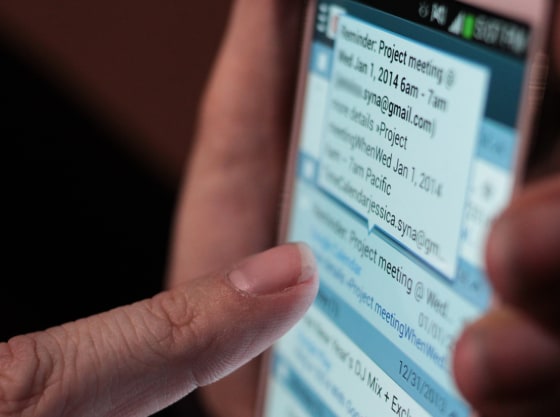The problem with touchscreens is that you have to touch them.
What if you could put your finger near a screen and have your phone wake up, or call up a keyboard under your waiting hand, or any number of other handy things that don't involve making contact? Synaptics has shown that it's possible on phones out today, and all you'd need is upgraded software.
Touchscreens like those in smartphones measure electrical activity, detecting when and where a conductive fingertip or stylus has made contact with the surface of the screen. But your body's electric field doesn't just stop at the skin, as anyone who's ever accidentally given a static shock to a friend can attest.
The electric field created by your finger can be detected a few millimeters away from the precision sensors of a modern smartphone's touchscreen. Until now, no one has made an operating system or other software take advantage of it.
Synaptics showed that one of today's most popular phones, the Galaxy S 4, can be made to detect your finger from a quarter of an inch away, a feature touted at the phone's release as "Air Touch." It's sensitive, accurate, and could be very useful.
In the demo app, a list of calendar items could be quickly scanned for details by sweeping the finger above them. It felt very natural in practice, though implementing it properly could be a difficult task for developers.
Still, it's a useful tool to have available, and Synaptics indicated that many other new phones could have the feature added -- with nothing but an upgrade to firmware.
The company isn't giving up on actual touch, of course; they make a large proportion of the touch-sensitive surfaces in phones and laptops. A new one was being shown off, in fact, that takes into account the pressure you put on it and intensifies or lightens your action on screen. Want to scroll fast or make a darker line? Press hard. Want a lighter touch? Touch more lightly.
It's very cool, but whether we'll actually see these things put into action is up to the likes of Samsung and Apple, who have to make their software and apps support it. But don't be surprised if touchless touch becomes a standard feature in the next generation of smartphones and laptops.
Devin Coldewey is a contributing writer for NBC News Digital. His personal website is coldewey.cc.
